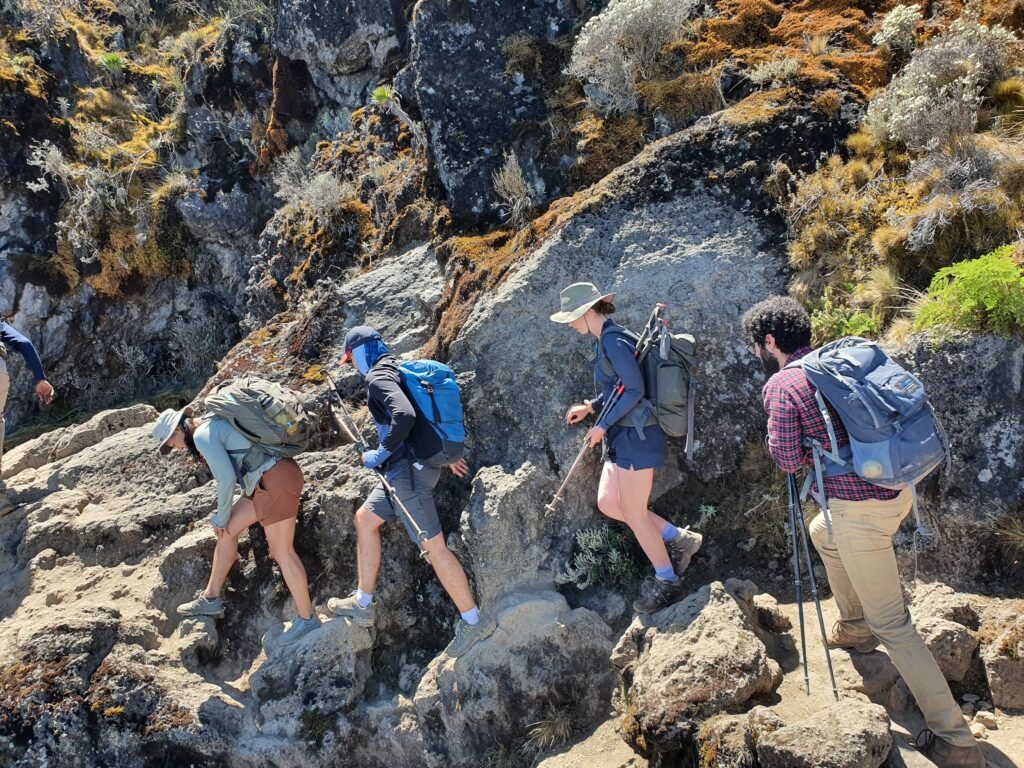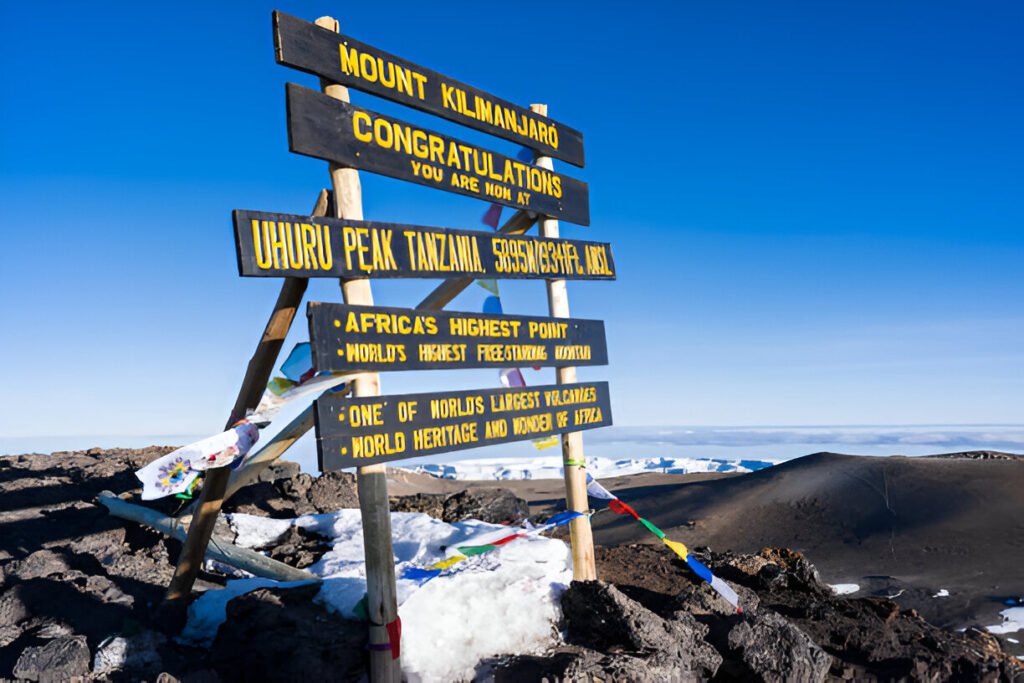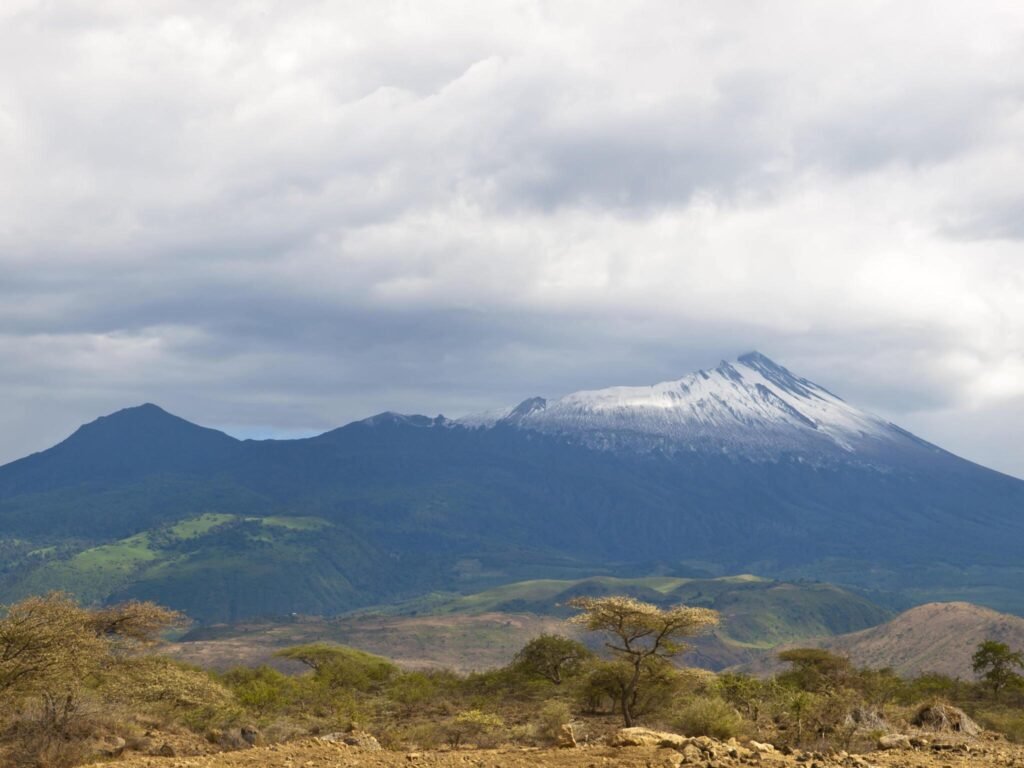mount-kilimanjaro-kilimanjaro-national-park-2025-2026 , Mount Kilimanjaro and its surrounding Kilimanjaro National Park offer a truly unforgettable adventure for climbers, trekkers, and nature enthusiasts. Whether you’re summiting the peak, trekking through its unique ecosystems, or exploring its cultural significance, the experience is nothing short of spectacular. Here’s everything you need to know about the best complete Kilimanjaro experience, from climbing the mountain to exploring the national park.

Mount Kilimanjaro/ Kilimanjaro national park 2025/2026 Itinerary Overview
mount-kilimanjaro-kilimanjaro-national-park-2025-2026o is located in Tanzania and is the highest peak in Africa, rising to 5,895 meters (19,341 feet). The Kilimanjaro National Park covers about 1,668 square kilometers (643 square miles) and is home to diverse ecosystems, wildlife, and rich cultural heritage. This UNESCO World Heritage site attracts over 50,000 climbers annually, with trekkers coming from all over the world to summit its peak.
The park is a treasure trove of biodiversity, with five distinct ecological zones ranging from lush rainforests at the base to alpine deserts near the summit, as well as glaciers and ice fields at the very top.
mount-kilimanjaro-kilimanjaro-national-park-2025-2026The Best Routes for Climbing Mount Kilimanjaro
For a complete Kilimanjaro experience, the most popular routes offer diverse landscapes, varying difficulty levels, and the chance to enjoy the mountain’s full beauty and wildlife. Below are the top climbing routes to help you choose the best one for your adventure:
1. Lemosho Route
Difficulty: Moderate
Duration: 7-8 Days
Highlights: Known for its breathtaking beauty, the Lemosho Route begins on the western side of Kilimanjaro and offers the best acclimatization opportunities. The route takes you through rainforests, moorlands, and alpine desert, with stunning views of the mountain and its surrounding landscapes. The Lemosho route also sees fewer climbers, offering a quieter experience.
Best for: First-time climbers or those seeking a scenic and less crowded route with good acclimatization time.
2. Machame Route
Difficulty: Moderate to Challenging
Duration: 6-7 Days
Highlights: Often called the “Whiskey Route,” this is one of the most popular routes on the mountain. The Machame route offers an incredible variety of landscapes, including rainforests, heathlands, and alpine deserts. The climb includes challenging sections such as the Barranco Wall, making it ideal for those looking for a more demanding ascent.
Best for: Adventurers who want a scenic and slightly more challenging climb with a great balance between difficulty and acclimatization.
3. Marangu Route
Difficulty: Moderate
Duration: 5-6 Days
Highlights: Known as the “Coca-Cola Route,” this is the shortest and most direct route to the summit. It is also the only route with hut accommodations, making it more comfortable for climbers who prefer to avoid camping. However, its rapid ascent offers less time for acclimatization, which can impact success rates.
Best for: Those with limited time or those who prefer a more comfortable climb with hut-based accommodation.
4. Rongai Route
Difficulty: Moderate
Duration: 6-7 Days
Highlights: The Rongai route approaches Kilimanjaro from the northern side and is known for being less crowded. It offers views of the Kenyan plains and passes through a variety of ecosystems, from dry savannahs to lush forests. The climb is steady, making it a good choice for those seeking a quieter and less technical route.
Best for: Climbers who want a quieter, alternative approach to the summit with fewer crowds.
5. Umbwe Route
Difficulty: Challenging
Duration: 5-6 Days
Highlights: The Umbwe Route is one of the shortest and most direct routes, but it is also the steepest, with fewer acclimatization opportunities. It is ideal for experienced climbers looking for a more intense challenge. The route passes through dense forests and rugged terrain.
Best for: Experienced trekkers who are in excellent physical condition and want a tough, steep challenge.
6. Northern Circuit Route
Difficulty: Moderate to Challenging
Duration: 8-9 Days
Highlights: The Northern Circuit is the longest route on Kilimanjaro, providing ample time for acclimatization and offering some of the most scenic and secluded sections of the mountain. The circular nature of the route allows for gradual altitude gain, improving summit success rates. It offers fantastic panoramic views of the mountain and the surrounding landscapes.
Best for: Climbers who want a longer, quieter, and more gradual ascent with stunning scenery.
Kilimanjaro’s Ecological Zones
The journey up Kilimanjaro is a visual feast, passing through several distinct ecological zones that each provide a unique landscape and atmosphere:
Cultivated Zone (800 – 1,800 meters): The lower slopes are home to farmlands where crops like coffee, bananas, and maize are grown. It’s the beginning of the journey, where you’ll first experience Kilimanjaro’s environment.
Rainforest Zone (1,800 – 2,800 meters): This zone is lush with tropical vegetation and dense trees. It is rich in wildlife, including monkeys, elephants, and numerous bird species. The cool, misty forest provides a refreshing environment and a wonderful start to the trek.
Heath and Moorland Zone (2,800 – 4,000 meters): The landscape becomes more open with shrubs, grasses, and giant plants like lobelias and giant groundsels. This zone offers expansive views and is home to wild animals such as buffaloes and antelope.
Alpine Desert Zone (4,000 – 5,000 meters): This zone is stark and barren, characterized by rocky terrain and low vegetation. The air thins, and the temperature drops, but you’ll have stunning views of the glaciers above. It’s an arduous stretch with few animals but beautiful panoramas.
Arctic Zone (5,000 – 5,895 meters): The final section of the climb, this zone is cold, windy, and almost entirely covered by snow and ice. The summit area features glaciers and permanent snow, and only the hardiest species of birds and insects live here. It’s a challenging, inhospitable environment that climbers must overcome to reach the top.
Wildlife and Flora of Kilimanjaro
Kilimanjaro is home to a rich variety of wildlife and plants that change as you ascend:
Flora: Kilimanjaro’s flora includes tropical trees in the rainforest, wildflowers and shrubs in the moorlands, and hardy alpine plants near the summit.
Fauna: The mountain hosts elephants, monkeys (like the blue monkey and black-and-white colobus), buffalo, antelope, and birds of prey like eagles. The higher zones see fewer animals, but the variety of birdlife, including tawny eagles, makes it a birdwatcher’s paradise.
Best Time to Climb Kilimanjaro
Dry Season (Best Time): The best time to climb is during the dry seasons from January to March and June to October. These months offer the clearest skies, stable weather, and optimal conditions for trekking.
Rainy Season (Less Ideal): The rainy seasons, from April to May and November to early December, should be avoided as they bring heavy rain, slippery trails, and poor visibility.
Accommodations on Kilimanjaro Climbing
Camping: For most routes, especially Machame, Lemosho, and Rongai, climbers camp under the stars. Tents are provided, along with sleeping mats and other essentials.
Huts (Marangu Route): The Marangu Route is the only route with hut-based accommodations. These huts provide shelter and some basic amenities, offering a more comfortable experience compared to camping.
Cultural Experience
The Chagga people, who have lived on the lower slopes of Kilimanjaro for centuries, have a deep cultural connection to the mountain. Many local tour guides are from these communities and can offer insight into the region’s rich traditions and stories about the mountain. The Maasai tribe, who live near the plains, also hold the mountain in spiritual regard.

Summary: The Ultimate Kilimanjaro Experience
To experience the best complete Kilimanjaro adventure:
Choose the route that suits your fitness level and experience, such as the scenic Lemosho or the challenging Umbwe.
Explore the ecological diversity from the lush rainforest to the icy summit.
Immerse yourself in the local culture by learning from the guides, many of whom belong to the Chagga and Maasai tribes.
Enjoy the wildlife, the flora, and the stunning views across the mountain and beyond.
A Kilimanjaro trek, whether in 2024, 2025, or beyond, offers an experience of a lifetime climbing through diverse environments, witnessing incredible natural beauty, and reaching the summit of Africa’s highest mountain.
Mount Kilimanjaro/ Kilimanjaro national park is Africa’s tallest mountain and the world’s largest free-standing mountain.
Located in Tanzania, Mount Kilimanjaro is Africa’s tallest mountain at about 5,895 meters (19,340 feet).
It is the largest free-standing mountain rise in the world, meaning it is not part of a mountain range.
Mount Kilimanjaro/ Kilimanjaro national park in Tanzania
Mount Kilimanjaro is Also called a stratovolcano (a term for a very large volcano made of ash, lava, and rock),

Kilimanjaro made up of three cones: Kibo, Mawenzi, and Shira. Kibo is the summit of the mountain and
the tallest of the three volcanic formations. on Mount kilimanjaro While Mawenzi and Shira are extinct, Kibo is dormant and
could possibly erupt again.
Scientists estimate that the last time it erupted was 360,000 years agoTo form the peaks of the Mount. The highest point on Kibo’s crater
rim is called Uhuru, the Swahili word for “freedom.” The mountain is also known for its snow-capped peak;
however, scientists warn that the snow might disappear within the next 20 years or so.
In 1889, German geographer Hans Meyer and Austrian mountaineer Ludwig Purtscheller became the first
people on record to reach the summit of Kilimanjaro. Since then, Kilimanjaro has become a popular hiking
spot for locals and tourists.
Because mountaineering gear and experience is not needed to reach the peak, tens of thousands of
climbers ascend the mountain each year. The climb is still dangerous, however, because of the risk
of altitude sickness—a condition climbers experience if they ascend too quickly, which can be deadly if not treated right away.
In 1973, the mountain and its six surrounding forest corridors Kilimanjaro National Park in
order to protect its unique environment. The park named a United Nations Educational, Scientific and
Cultural Organization (UNESCO) World Heritage site in 1987.
A variety of animals live in the area surrounding the mountain, including the blue monkey (Cercopithecus mitis).
